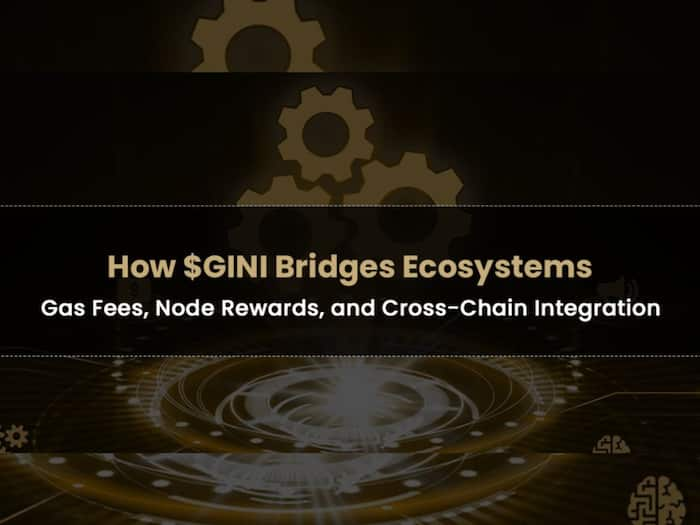
Written By Nishit Raghuwanshi
Published By: Nishit Raghuwanshi | Published: Mar 07, 2025, 03:58 PM (IST)

When you investigate the KALP ecosystem, one thing that will really catch your attention is how their native token $GINI works. Unlike many crypto tokens that feel tacked onto their ecosystems, $GINI actually serves some critical functions that make the whole system breathe.
First off, $GINI does something pretty neat – it works across multiple blockchains.
Think about it like this: most blockchain networks are like islands, isolated from each other. $GINI acts like a bridge connecting these islands. It’s created on the KALP network but can move to other blockchains through something called the Permissioned Kalp Bridge.
What makes KALP’s approach interesting is that they’ve built in permissions and compliance checks. This means assets can move between chains while still following the rules – crucial for any serious financial applications.
$GINI is what you use to pay for transactions on KALP’s various subnetworks. Need to transfer assets? That’ll cost some $GINI. Want to run a smart contract? You’ll need $GINI for that too.
These fees serve a few important purposes:
· They prevent spam
· They help pay for the network’s operation
· They create natural demand for the token
Having watched various blockchain projects evolve, I’ve noticed that tokens without clear utility often struggle to maintain value. $GINI’s role as the “fuel” for transactions gives it an essential purpose within the ecosystem.
Here’s where things get interesting for people who want to participate more actively in the KALP ecosystem. Part of those gas fees I mentioned? They go to reward the people running the network’s nodes.
Node operators are basically the backbone of any blockchain. They’re the ones providing the computing power, storage, and bandwidth that keeps everything running. On KALP, these operators get rewarded with a portion of the transaction fees collected in $GINI.
The more transactions processed on a node operator’s subnetwork, the more rewards they earn. It’s a simple but effective incentive system:
· Run a node, help the network
· Process transactions
· Earn $GINI rewards
I’ve run nodes on other networks before, and the economics often don’t make sense for smaller operators. Kalp’s approach seems designed to be more inclusive, with rewards proportional to participation rather than just favoring the biggest players.
All these functions come together to create what looks like a sustainable ecosystem. The gas fees and reward system create a cycle:
· Users pay $GINI for transactions
· Node operators receive rewards
· More operators join, making the network more secure and decentralized
· A more robust network attracts more users
· And the cycle continues
KALP’s approach with $GINI seems well thought out. Rather than treating their token as an afterthought or pure speculation play, they’ve integrated it into the core functions of their network. Compared to many projects I’ve analyzed, $GINI’s utility within the KALP ecosystem shows a level of design thinking that’s worth paying attention to